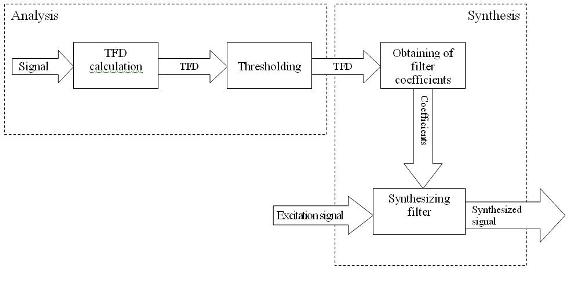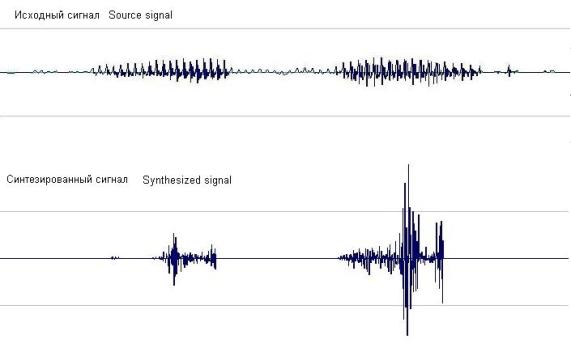Topicality
The utilization of one-dimensional methods for analyzing of non-stationary signals doesnít give satisfactory results often. Conception of instantaneous frequency requires that only the one frequency component in each moment to exist. Conception of group delay requires distinct frequency to appear only once on interval of analysis. So these one-dimensional conceptions are not adapted for analysis of majority of real signals. To analyze such signals itís badly needed to use joint time-frequency representations. And there are number of transformations to acquire time-frequency representations of signals.
The most well-known is short-time Fourier transform (STFT). But it has great disadvantage because the resolution it gives badly depends on time window characteristics which is used to acquire time-frequency distribution. In particular there is trade-off between resolution in frequency dimension and resolution in time dimension. Long-time windows cause worse time resolution and better frequency resolution to take place. And on the contrary short-time windows allow acquiring better time resolution and worse frequency resolution.†
Other widely distributed method is wavelet transform (WT). But the nature of this method is non-linear. And because of that it gives good time resolution on high frequencies and not so good on low frequencies. And frequency resolution becomes poorer with the increase of analyzed frequency.
Done researches.
I was pointed to applied utilization of time-frequency analysis. In particularly there was plan to develop speech codec which would use time-frequency distributions in analysis chain. The structure of codec is presented in figure 1.

Figure 1. The structure of speech codec.
The head problem was to choice concrete time-frequency distribution. Disadvantages of STFT and WT in resolution forced to pay attention to distributions of Cohenís class. Four different Cohenís classís distributions of the same signal are presented on figure 2. This signal is the sine of low frequency which lasts a quarter of total signal duration and then the signal equal to zero for two quarters and then the sine of high frequency appears in the last quarter.

Figure 2. Four different Cohenís classís distributions of the same signal. Animation made by Gif Animator, 5 frames, 3 loops.
It can be seen that all distributions except for Choi-Williamsís distribution have strong interference components. That was reason to use Choi-Williams distribution. The model was developed with Matlab. The test signal is the word ďGaborĒ pronounced by the man and it is presented in figure 3. This word has two distinct syllables. The synthesized signal is also presented in figure 3.

Figure 3. The source and synthesized test speech signals.
It can be seen that the form of synthesized signal differs from the source signal quite significantly. The results of psycho-acoustic analysis admitted low quality reproduction of source speech.
Researches to be done.
The negative results in realization of speech codec which uses time-frequency analysis forced to change the direction of research. The most prospective utilization of time-frequency analysis with Coenís classís distributions is it appliance to narrow-band signals which heavily disturbed by noise. This can take peace for example in satellite communications. Radio signal from satellite experiences strong attenuation while it comes to earth. And often the signal to noise ratio is very low. In addition angle modulations are used in satellite communications. And for such types of modulations there is a threshold effect. When signal to noise ratio decreases to a certain level the quality of reception falls critically. In such cases the usage of time-frequency analysis can help to increase the quality of reception. Now Iím working on development of model of time-frequency demodulator. When the model is ready I will do comparative research of badly noised signalsí demodulation quality with traditional demodulators and time-frequency demodulator. Researches are scheduled to be finished by the end of 2008 year.
|




